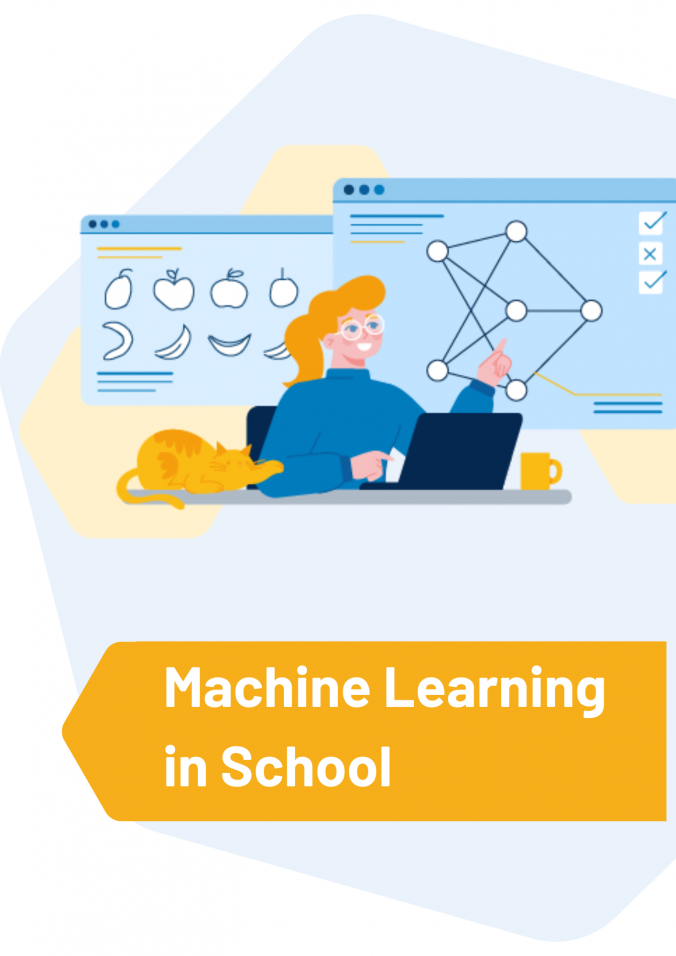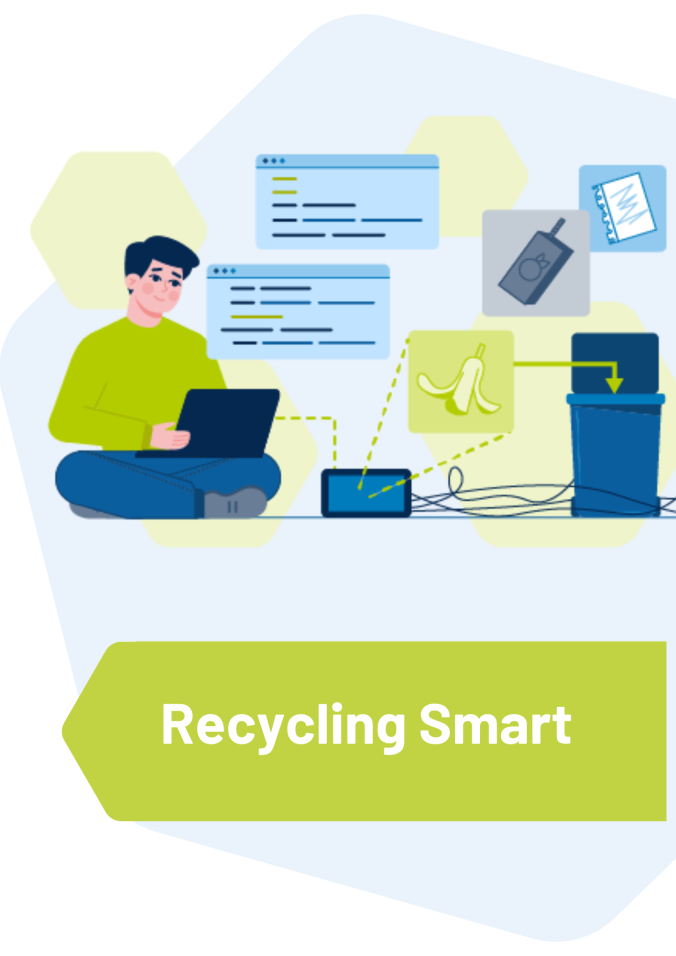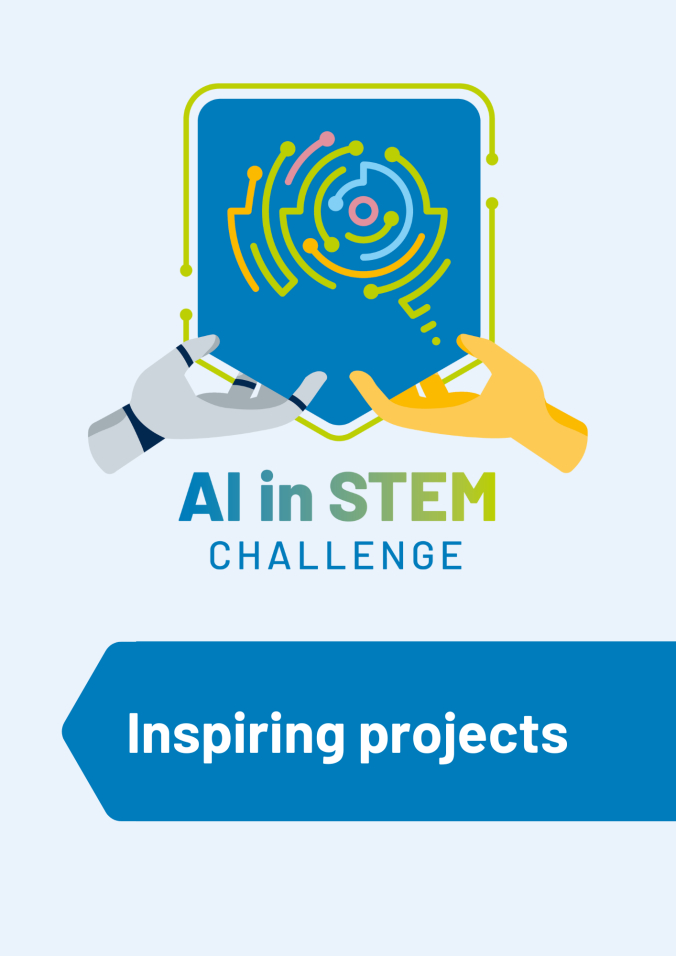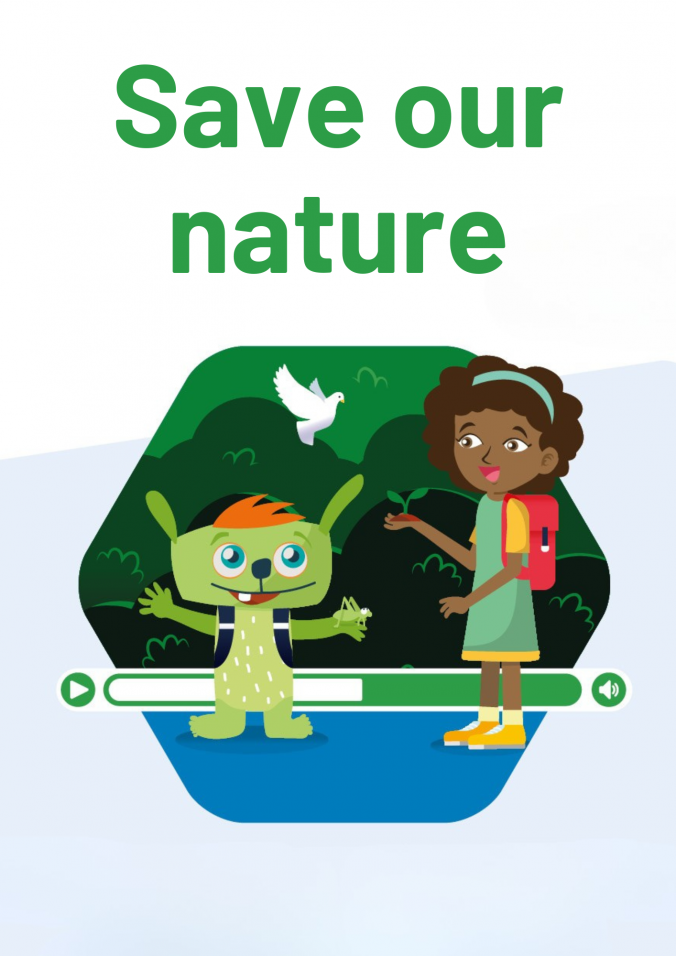Quick Guide to the AI in STEM teaching materials
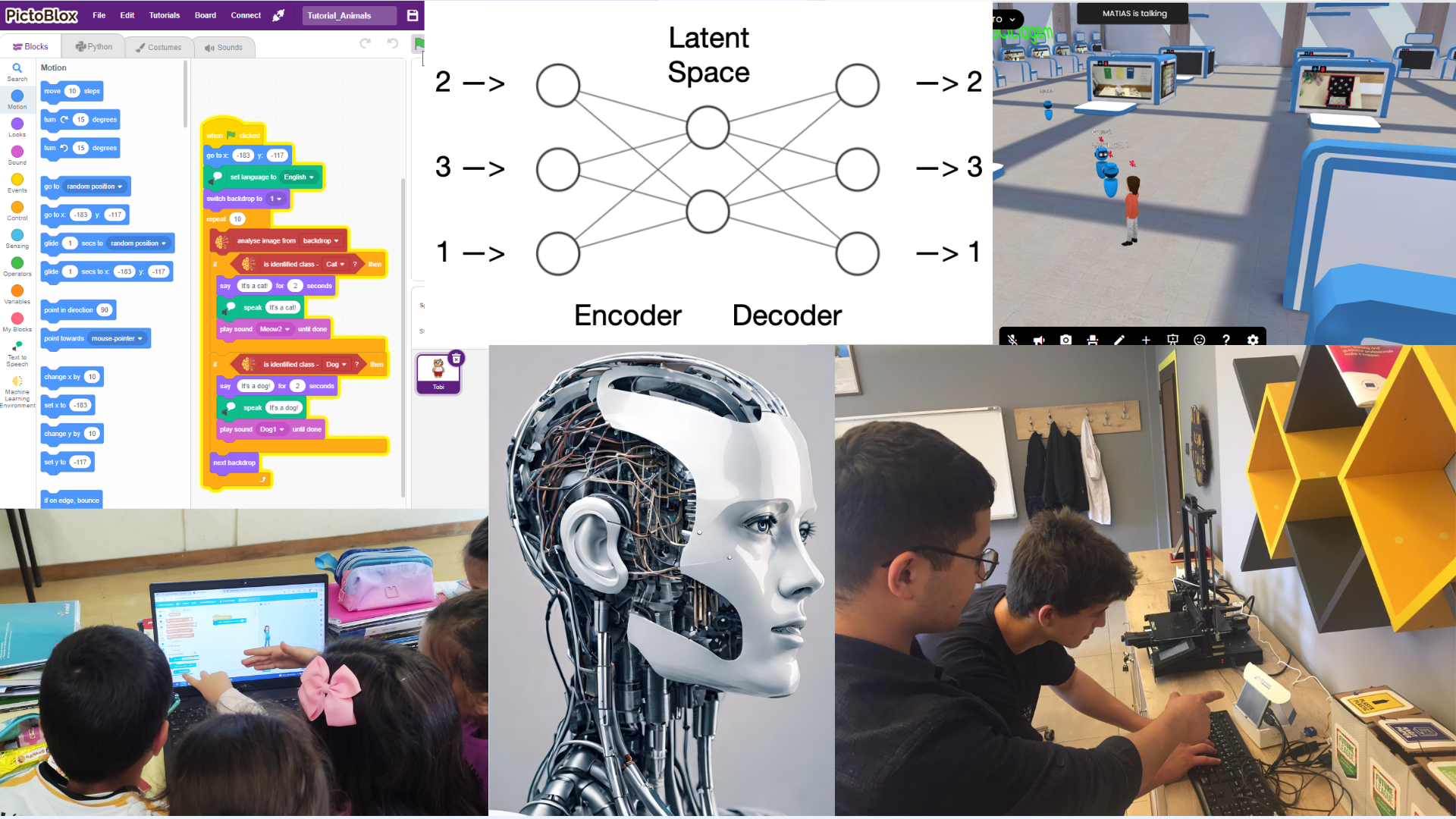
Overview

How can students learn to understand, apply and code with AI?
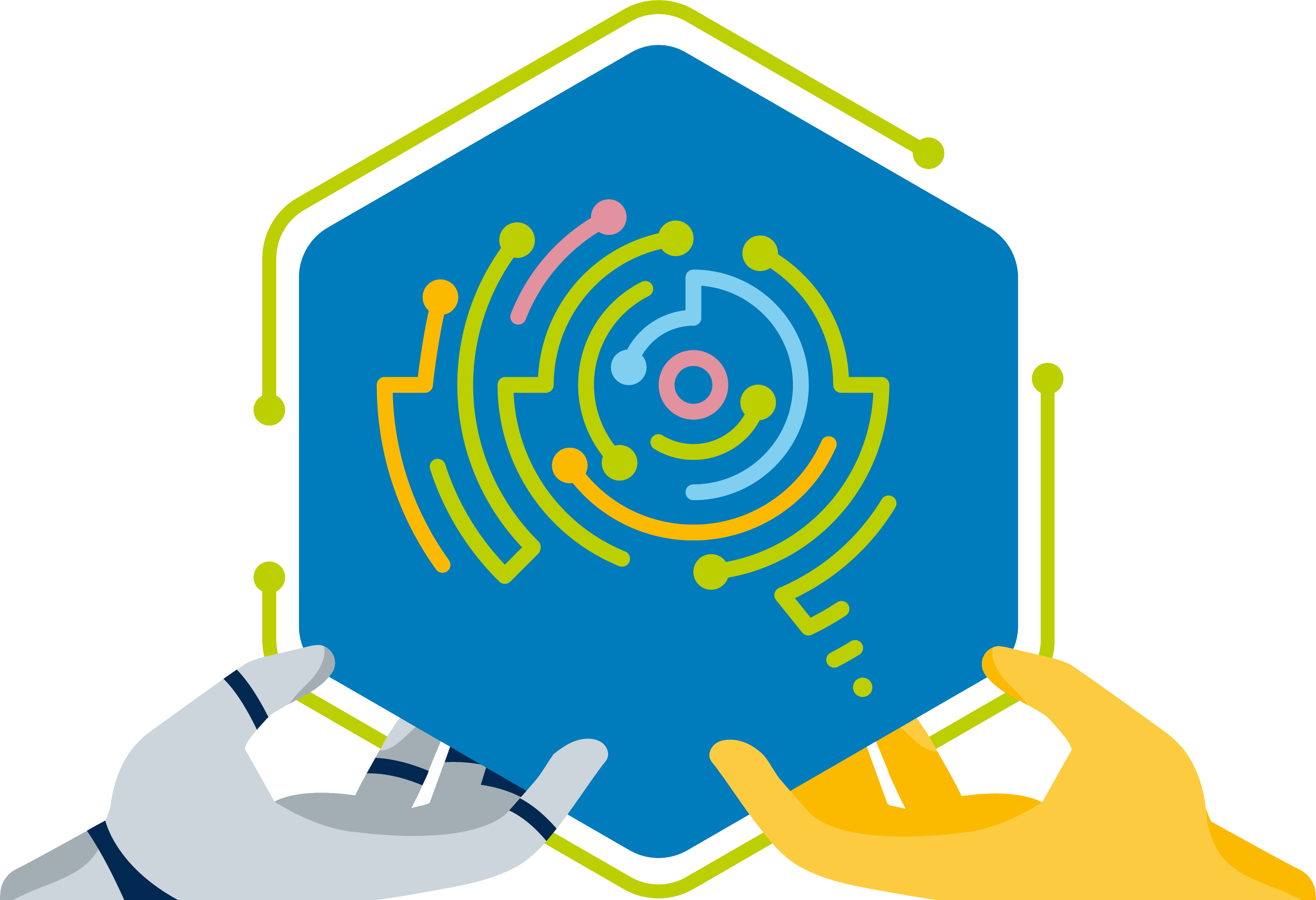
To help educators in primary and secondary schools with implementing the topic in STEM classes, we offer five digital teaching units developed by teachers for teachers. Following the AI in STEM Challenge, our Europe-wide student-teacher competition, you can also browse some of the finalist projects. All units can be adapted to specific teaching and learning requirements.
Our AI in STEM materials are suited for teachers with and without previous experience in the subject. The ready-to-use teaching units and project ideas are available as open educational resources licensed under Creative Commons (CC BY-SA). More about the publication, its supporter Amazon Future Engineer, and the people behind the project can be found on this page.
The following quick guide aims to help you find the module or project best suited for your classroom.
First Steps in AI and Data Analysis
This material requires no prior knowledge from the teacher as it takes you through the first steps to introduce your students to the concepts of big data, AI and machine learning. 10- to 14-year-old students will explore ways in which AI can be used (text and image generation), take part in citizen science projects (tagging images for research purposes) and get a chance to discuss the ethical concerns around AI. The material includes six activities that can be done in separate 45- to 60-minute classes or during a project day.
Insights into the material by author Paul Tyler (UK) can be found in the webinar "AI in STEM Education: teaching resources for younger students" (video available on YouTube)
Background information and more resources for teaching about AI
In this article on the theory and practice of AI in education, you will find general considerations as well as links to more resources for approaching the topic with younger students, such as the Code.org AI curricula and Machine Learning for Kids UK projects.
From EcoKids Teach AI, 6–10 years:
Training an AI – Students use the software Teachable Machine to train a machine learning model with pictures of different types of waste (glass, paper, plastic). Combines the topic of recycling with a simple coding project on a block-based programming platform. The material includes a preview of a trained machine learning model as well as a tutorial video for planning and preparing the coding task.
From First Steps in AI and Data Analysis, 10–14 years:
Supermarket Secrets – Introduction to the concept of big data by analysing two shopping receipts (templates provided)
Rolling the Dice – Students collect data in teams of 2 by rolling dice and enter them in a spreadsheet (template provided) to see the pattern that emerges from the data.
Experimenting with chatbots or music & image generators – Students create texts/images/pieces of music to gain an understanding of the importance of the human input element and how the information they input can be refined to alter the AI output. The material includes example prompts, tasks and discussion points for ethical issues.
From Machine Learning in School, 14–18 years:
Introduction to artificial neural networks: Who survived the sinking of the Titanic? – Students explore how artificial neurons work by experimenting with an interactive simulation of the historical Titanic data set. They can input the data of real or ficticious passengers in order to see a neural network predict the passenger's chances of survival. All texts and exercises are available digitally and suitable for self-directed learning.
AI – Career Orientation, all age groups:
How does artificial intelligence change or influence current and future professions and career paths? Students can explore one or several resources in our compilation of useful career orientation materials and links (printed interviews, podcasts, videos) to find out more about jobs involving AI and machine learning.
This project for primary students presents an exciting fusion of environmental education and the world of artificial intelligence. By adopting a superhero narrative, students embark on a mission to save the planet, actively engaging in recycling practices while simultaneously exploring the fundamentals of AI. Some of the key learning involves students training AI using visual block-based programming (Scratch/PictoBlox) and machine learning (Teachable Machine) to recognise and sort recyclables.
Insights into the material by author Cláudia Meirinhos (Portugal) can be found in the webinar "AI in STEM Education: teaching resources for younger students" (video available on YouTube)
Through an interdisciplinary approach integrating literature, neuroscience, and programming, children develop a practical AI assistant to support people with memory disorders. For our AI in STEM Challenge, Italian primary students trained a machine learning model to recognise rooms and typical objects, creating an assistant in Scratch 3.0 that, when shown an object, suggests the appropriate room and the activities that can be performed there.
This project for students aged 14–18 requires basic robotics and coding skills (Python). It combines the capabilities of machine learning with object detection technology to facilitate and encourage recycling: When wastes such as glass, plastic, or organic are shown to a simple webcam, the object is recognised and the corresponding box in a set of recycling bins opens. The project can also be taken beyond the school – students could present and/or implement their smart recycling system in local facilities such as retirement homes or kindergartens.
AI Firewatchers: Detecting and preventing wildfires
For the AI in STEM Challenge, Portuguese students built and coded two complementary solutions for wildfires detection and control: The first solution uses a flame sensor to detect fire, triggering alarms at the forest watchtower. The second, more innovative solution, uses artificial intelligence and machine learning to identify fire patterns in forest images. When detecting a wildfire, the system automatically activates a water tank mechanism. This project is suited for 14- to 16-year-old students and involves research, crafting, and coding with a block-based programming tool including machine learning extensions.
Saving Patella ferruginea: Protecting the local habitat with the help of machine learning
This project with 14- to 16-year-old students from Spain was invited to the final of the AI in STEM Challenge. It highlights the potential of AI and IoT in marine conservation, providing an innovative and energy-efficient method for monitoring endangered species such as the limpet Patella ferruginea. The team designed an autonomous monitoring system that activates every 24 hours, and a camera captures images of the area where the limpet lives. These images are processed on a Raspberry Pi to assess environmental conditions. The picture is run through a machine learning model trained in Teachable Machine, then identifies the limpet and assesses potential threats from the seaweed.
This material for students aged 14+ is suited for self-directed learning. The digital learning units are aimed both at students and teachers who want to familiarise themselves with the topic or expand their existing knowledge of artificial neural networks. Many sections contain interactive examples that allow you to explore neural networks or their components, how neural networks learn, minimise errors and are used in applications such as text, image and audio processing.
STEM Resources 4.0: Magic Geometry – Discover the Secret of Solids
Using inquiry-based learning and pair programming methodologies, this project lets students aged 12–16 explore elements of the mathematics curriculum using AI and machine learning through the PictoBlox platform. They will train models, develop programs and test solutions, thus becoming creators of their own digital educational resources. This activity describes a sample project for the calculation of volume and surface area of geometric solids.
Using inquiry-based learning and pair programming methodologies, this project lets students aged 12–16 explore elements of the science curriculum using AI and machine learning through the PictoBlox platform. They will train models, develop programs and test solutions, thus becoming creators of their own digital educational resources. The following links present sample activities for chemistry and biology. They can easily be adapted to any subject and content and can serve as a basis for a wider interdisciplinary project.
Chemistry activity: The Colour of Knowledge: For this activity, students receive colour cards and research substances that have a pH value corresponding to each colour on the scale. They then proceed to training a machine learning model in order to create their own digital educational resource about pH.
Biology activity: Adventure in the Local Ecosystem: Students select an animal and then research characteristics of the selected animals. After that, they train a machine learning model to create their own digital educational resource about animals.
A coding example for classifying pictures of dogs and cats in PictoBlox can be viewed and run by opening this tutorial in PictoBlox. This video demonstrates the training, programming and testing steps in PictoBlox.
Share this page
